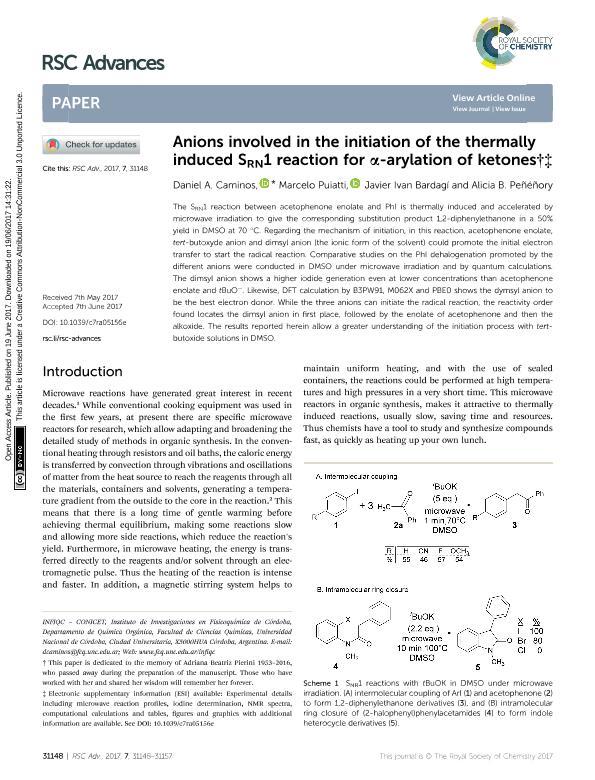Artículo
Anions involved in the initiation of the thermally induced SRN1 reaction for α-arylation of ketones
Fecha de publicación:
06/2017
Editorial:
Royal Society of Chemistry
Revista:
RSC Advances
ISSN:
2046-2069
e-ISSN:
2046-2069
Idioma:
Inglés
Tipo de recurso:
Artículo publicado
Clasificación temática:
Resumen
The SRN1 reaction between acetophenone enolate and PhI is thermally induced and accelerated by microwave irradiation to give the corresponding substitution product 1,2-diphenylethanone in a 50% yield in DMSO at 70 °C. Regarding the mechanism of initiation, in this reaction, acetophenone enolate, tert-butoxyde anion and dimsyl anion (the ionic form of the solvent) could promote the initial electron transfer to start the radical reaction. Comparative studies on the PhI dehalogenation promoted by the different anions were conducted in DMSO under microwave irradiation and by quantum calculations. The dimsyl anion shows a higher iodide generation even at lower concentrations than acetophenone enolate and tBuO-. Likewise, DFT calculation by B3PW91, M062X and PBE0 shows the dymsyl anion to be the best electron donor. While the three anions can initiate the radical reaction, the reactivity order found locates the dimsyl anion in first place, followed by the enolate of acetophenone and then the alkoxide. The results reported herein allow a greater understanding of the initiation process with tert-butoxide solutions in DMSO.
Palabras clave:
Microwave (Mw),
,
Electron Transfer
,
Dimsyl,
,
Tbuok
Archivos asociados
Licencia
Identificadores
Colecciones
Articulos(INFIQC)
Articulos de INST.DE INVESTIGACIONES EN FISICO- QUIMICA DE CORDOBA
Articulos de INST.DE INVESTIGACIONES EN FISICO- QUIMICA DE CORDOBA
Citación
Caminos, Daniel Alberto; Puiatti, Marcelo; Bardagi, Javier Ivan; Peñeñory, Alicia Beatriz; Anions involved in the initiation of the thermally induced SRN1 reaction for α-arylation of ketones; Royal Society of Chemistry; RSC Advances; 7; 50; 6-2017; 31148-31157
Compartir
Altmétricas




